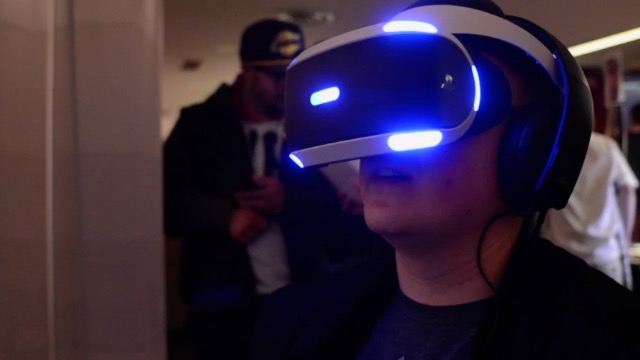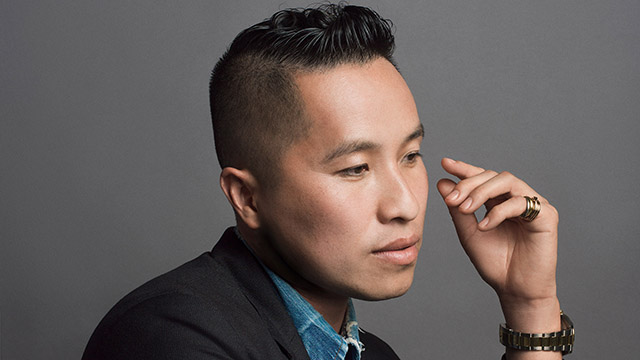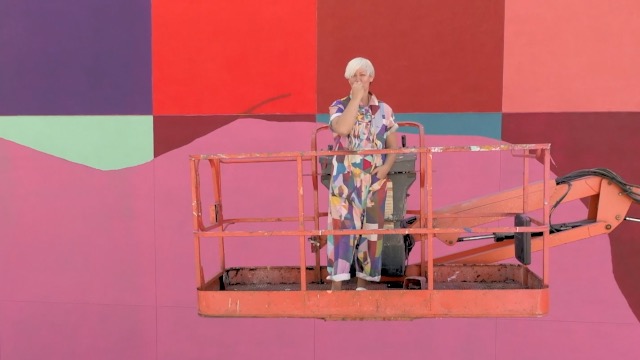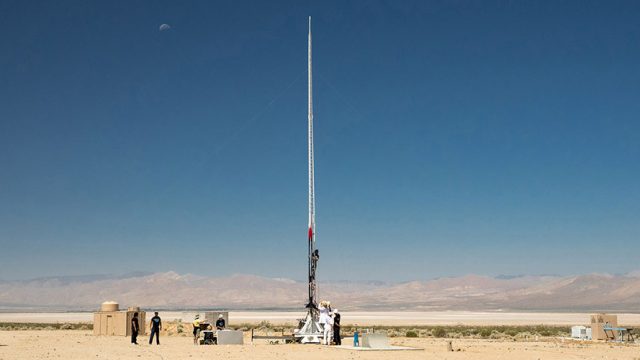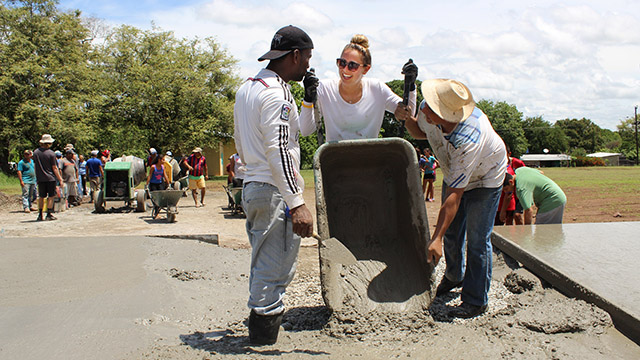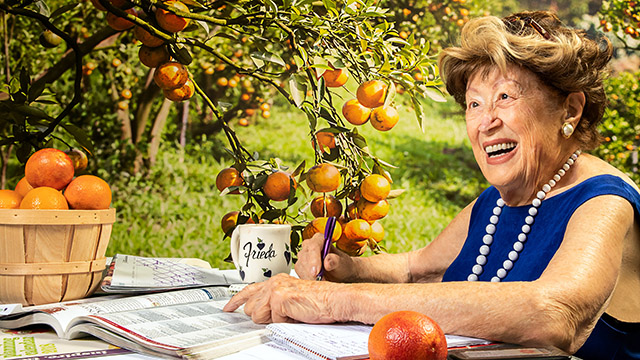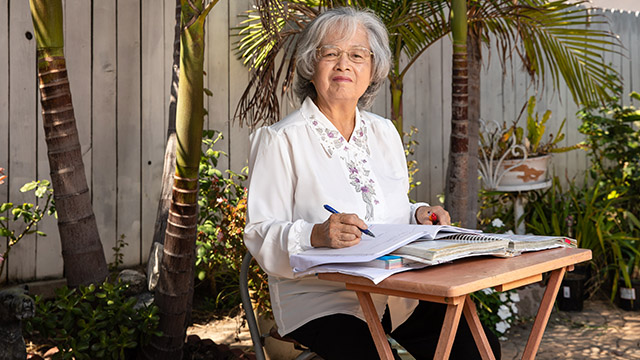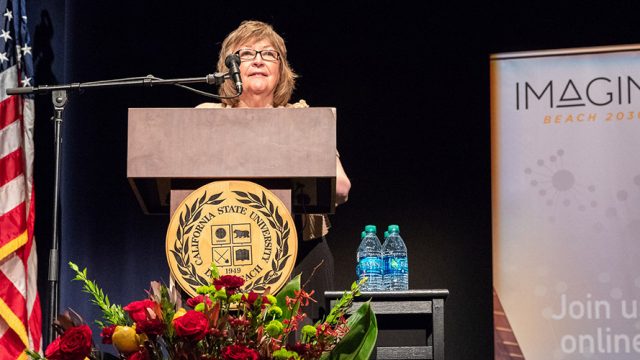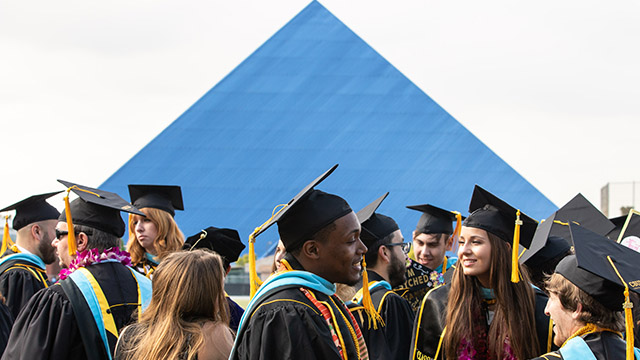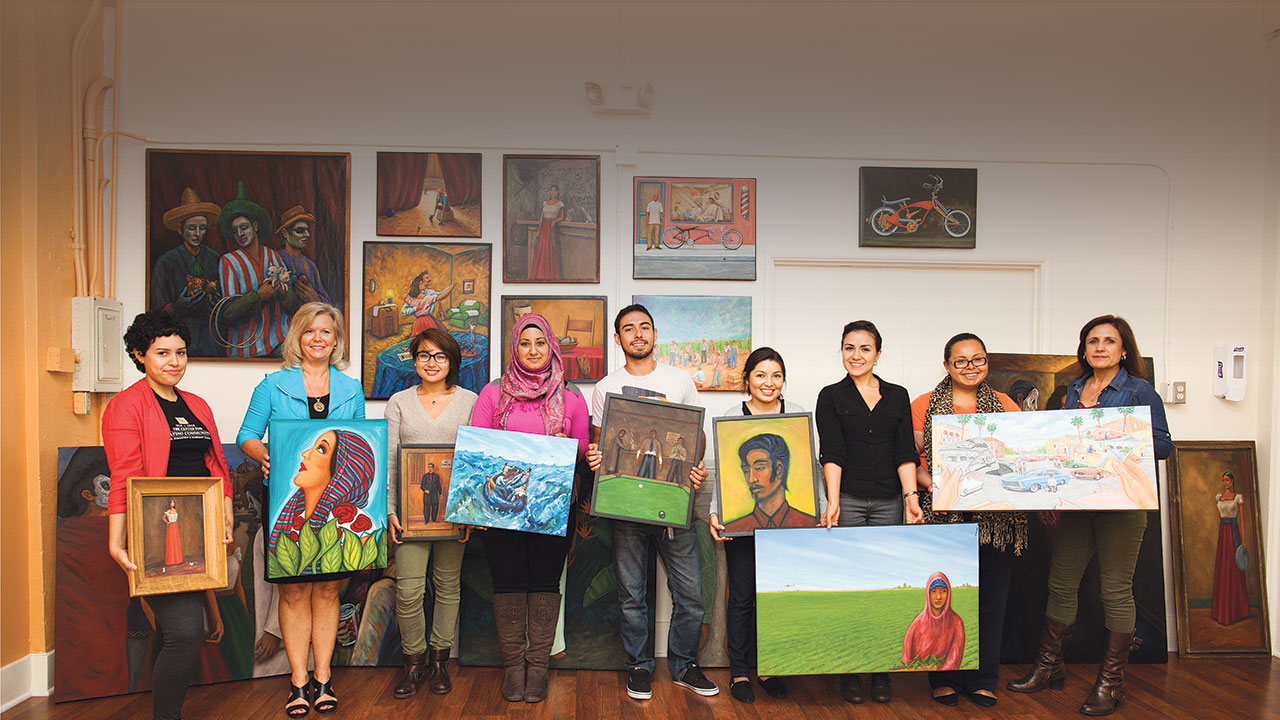Comunidad
Visitors to CSULB’s new Centro Salud es Cultura on downtown Long Beach’s Pine Avenue find themselves surrounded by a bustle of activity.
Bright artwork covers the walls as Zumba exercise music resonates from one room, while kids, parents and health advisors talk about nutrition in another area and CSULB students tutor other children down the hall.
When the center celebrated its inauguration last October, founder Britt Rios-Ellis saw a chance to build a new world for the community.
“I wanted to create an environment where people could feel their cultural value at the same time they were synthesizing health education, social justice and community-based participatory research,” said Rios-Ellis, a Health Science Department professor who also directs the National Council of La Raza (NCLR)/CSULB Center for Latino Community Health, Evaluation and Leadership Training, of which the center is a part. “The goal was to create opportunities for health, educational and cultural promotion programming aimed at improving the lives of underserved Latinos and others interested in Latino issues.”
Rios-Ellis’s vision becomes reality wherever she looks in the center. Zumba classes are nearly full, and there’s a waiting list for the Healthy and Strong Project where Latino families attend nutrition classes aimed at reducing obesity.
Art and health share the same space. With a turn of her head, she can see work by prominent Latina artist Emilia Garcia, whose art helped inaugurate the center. Music classes also are on the calendar. “One of the things we see is the role of the center as a strong and vibrant hum of cultural activity at CSULB,” said Rios-Ellis.
Moreover, she noted, “Nationally, we need a different lens to better understand the reasons behind Latino optimism and longevity at the same time that we prevent diabetes and obesity, among other chronic and infectious diseases. Right now in the U.S. Latinos live longer than whites and African-Americans and are the most optimistic of all racial/ethnic groups. We need to make sure that we understand why these dynamics are occurring despite poverty, less formal education and a lack of health insurance. We also need to make sure that acculturation to U.S. norms doesn’t make the Latino population less healthy. Latinos are the youngest and fastest growing population and are intricately tied to the future of California. At the centro, we are committed to a healthy Latino future.”
Through a $3.75 million U.S. Department of Agriculture grant, the center is developing lessons on how to shop well on a budget, how to exercise and how to eat healthy foods, all while reinforcing cultural values of family, trust and respect.
Moreover, the center gives Cal State Long Beach students an opportunity to work with community health workers. “We offer the unique chance for students to obtain real-world experience in the same place where they can see the value of the center’s cultural aspects,” Rios-Ellis said.
Staff member Natalia Gatdula believes the facility is a great addition to the community and campus. After earning her bachelor’s and master’s degrees at CSULB, she became director of community health programs for the Center for Latino Community Health, where she oversees research and interns.
“The innovation of having our own downtown centro has helped CSULB students to recognize their cultural assets while providing better service,” she said “We try to communicate a sense of belonging that makes people say ‘Wow!’ I feel that shock when people visit the center and come out saying they feel at home.”
Additionally, Gatdula oversees the Healthy and Strong Project that includes CSULB health and human services graduate students. “It’s a great program, now beginning its fourth year, where we host education sessions in the downtown Long Beach YMCA in cooperation with St. Mary Medical Center as well as sessions in Paramount’s Spane Park.
“This is a rare chance to blend research and service,” Gatdula added, noting that the Center for Latino Community Health has grown to a full-time staff of more than 70 to meet community needs.
Graduate research fellow Lizette Alvarez, who works for the Healthy and Strong program, is equally enthusiasic. “I love working with the community,” she said. “The participants are constantly teaching me new things. As university students, we are taught to work in professional, organized spaces but the community space is an informal one. This by no means makes it less valuable, though it is definitely challenging to make the transition.”
“I see a lot of hope in the Centro Salud es Cultura,” Rios-Ellis said. “There are a lot of intangibles that cannot be measured by current and validated research methods. We seek to expand the research on Latino cultural assets. I love the art work and the services we offer. This center offers both a home and an anchor for the community. The other aspect of the fusion of our campus-based and community-based centers is that CSULB student researchers stand a much better chance of being snatched up by master’s and doctoral programs. There is something unique going on at CSULB and what a better place than to have a community-based center in the most diverse city in the country.”
The center is located at 1205 Pine Ave. #102, Long Beach, or learn more at Centro Salud es Cultura.
Download the Beach Magazine app to find exclusive digital content.



